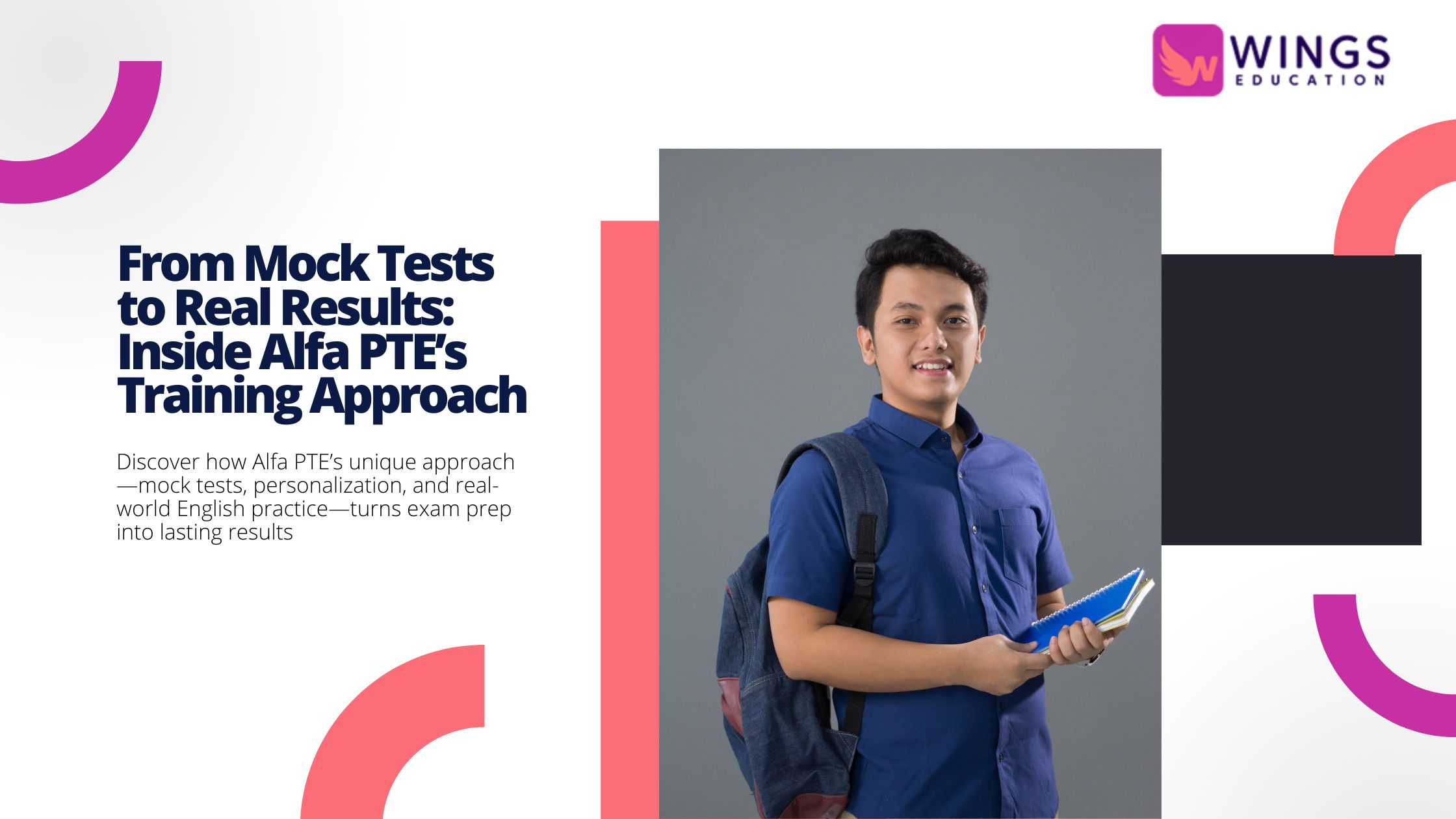
PTE Core vs. PTE Academic: Which One Needs a Different Training Strategy?
Explore key differences in preparation between PTE Core and PTE Academic and discover how to tailor your PTE Core training strategy for real-world success.
With both tests assessing the four core language skills—listening, reading, speaking, and writing—it’s easy to assume they require the same kind of preparation. However, a closer look reveals distinct differences in their purpose, content, and context. PTE Academic focuses on academic English used in universities and scholarly settings, whereas PTE Core is built around functional, everyday English relevant to workplaces and social situations, especially in Canada. This divergence in test objectives means that a one-size-fits-all study method may not yield the desired results. To truly excel, candidates must tailor their preparation according to the test’s specific demands and audience.
This fundamental shift in focus means that test-takers must approach PTE Core with a practical mindset. Instead of preparing for scholarly debates or university lectures, candidates should train to understand and respond to real-world scenarios—like giving instructions, managing workplace communications, or interpreting public announcements. The language used is less formal and more reflective of day-to-day interactions in English-speaking environments, especially in Canada. As a result, success in PTE Core depends not just on language proficiency, but on your ability to apply it in functional contexts. This makes PTE Core training an entirely different experience from academic preparation.
The speaking section, for example, is one area where the distinction between the two tests becomes immediately clear. In PTE Academic, you’re asked to describe abstract images, repeat academic sentences, or retell complex lectures. The goal is to assess your fluency and ability to convey academic-level ideas. But PTE Core shifts the focus entirely. You may be asked to record a voicemail message, respond to a short work-related query, or speak naturally in a scenario you might actually face in daily life. It may sound simpler, but in truth, this requires a different kind of preparedness—not just fluency, but also spontaneity and real-world clarity. Your PTE Core training needs to focus on natural speech patterns, tone, and practical vocabulary rather than overly rehearsed academic responses.
The writing section, too, presents a major difference. PTE Academic expects essays on education systems, environmental issues, or economic trends. You’re rewarded for structure, formal tone, and advanced vocabulary. PTE Core, however, is far more grounded in reality. You might have to edit a short piece of text, write a brief summary, or respond to a work-related scenario. Instead of focusing on argumentation and coherence, the emphasis is on clarity, brevity, and relevance. It’s no longer about constructing the perfect academic paragraph, but rather making your point in a way that’s clear, practical, and correct. That’s where many test-takers struggle if they use the same academic strategies—because the expectations shift drastically. A strong PTE Core training approach will prioritize grammar correction, tone matching, and effective workplace communication.
In the reading section, the contrast lies in content density and type. PTE Academic often presents passages drawn from research articles, academic publications, or formal reports. You’ll need to infer meanings, identify arguments, and connect abstract ideas. But in PTE Core, reading tasks are built around everyday workplace documents, instruction manuals, or job advertisements. You’re expected to skim quickly, find specific information, and understand simple yet purposeful English. This means that instead of working with academic reading materials, PTE Core preparation should include policy documents, employee handbooks, and emails. The ability to understand instructions or determine the purpose of a text is far more valuable than parsing dense academic jargon.
Listening, though similar in structure across both tests, still varies in tone and delivery. Academic listening tasks involve lectures, debates, and presentations. You’re evaluated on your capacity to grasp detailed information and track logical flow. But in PTE Core, listening becomes a more grounded skill—how well can you understand a supervisor’s instructions, a voicemail about a delivery change, or a colleague’s question? The accents may be more varied, the speed more natural, and the delivery less polished. The aim is to assess your real-world listening ability, not your note-taking prowess. In this sense, your PTE Core training must include practice with diverse audio inputs—such as work meetings, customer interactions, and announcements—rather than just scripted academic material.
Now, both tests use the same automated scoring system, rating performance on a scale from 10 to 90. So technically, the metrics are aligned. But the inputs into that scoring system differ in tone, vocabulary, and context. The same grammatical accuracy and pronunciation quality are required in both, yet how you demonstrate those skills depends entirely on the nature of the task. For instance, accurate grammar in an academic essay might involve complex clauses and subject-verb agreement across longer sentences. In PTE Core, it might just mean clearly and correctly conveying a brief instruction or editing a basic paragraph. Both matter—but your training approach must reflect the differences in use-case.
Where many candidates go wrong is assuming that because the test format is the same, the preparation can be duplicated. In reality, PTE Core demands a different mindset. It’s not about being “simpler” or “easier.” It’s about being more aligned with how English is used in workplaces, community interactions, and routine problem-solving. The stakes are different, and so is the preparation journey.
If you’re training for PTE Core, your focus should be less on essay frameworks and academic vocabulary, and more on functional language, practical writing, and context-driven speaking. This doesn’t mean neglecting grammar or pronunciation—it means developing those skills in scenarios that reflect your target environment: Canada’s workspaces, social settings, and public services. It’s not about preparing for university anymore. It’s about preparing for life.
Many test-takers assume that since both PTE Core and PTE Academic share a similar structure—Speaking & Writing, Reading, and Listening—the preparation methods can be recycled. But this assumption can be misleading. While the format might look the same, the skills being measured and the context in which they’re applied are vastly different. PTE Academic evaluates your ability to function in an academic environment—composing essays, interpreting research texts, and engaging in scholarly discussions. On the other hand, PTE Core emphasizes practical communication: following instructions, summarizing conversations, and responding to everyday situations. If you’re preparing for Canadian immigration, your training should simulate real-life challenges—leaving voicemails, understanding workplace policies, or editing a simple email. This is where PTE Core training becomes crucial. It’s not about writing a flawless academic argument but being able to communicate effectively and clearly in day-to-day interactions. The smarter strategy is to train specifically for the task at hand, not for a generalized idea of English fluency.
Adapting to the future means recognizing that English proficiency is no longer just about passing a test—it’s about thriving in environments where communication plays a vital role in everyday success. Whether you’re heading to a classroom in Australia or a workplace in Canada, the demands placed on your language skills will differ, and so should your preparation. Relying on outdated study materials or copying strategies from one version of the PTE to another can hold you back. Instead, focus on real-world application, context-specific practice, and flexible thinking. PTE Core training should mimic everyday tasks, while PTE Academic demands academic discipline and structured responses. When your preparation is aligned with the real-world use of English expected in your destination country, you’ll feel more confident—not just during the exam, but when you actually begin your new chapter abroad. In the end, your ability to adapt your strategy is what will set you apart from the rest.























